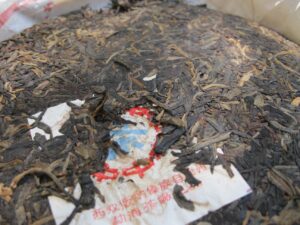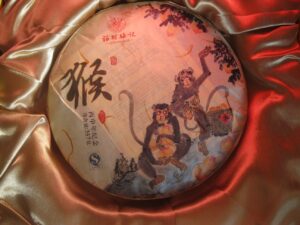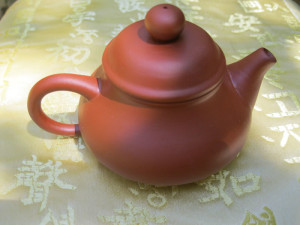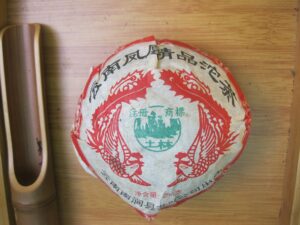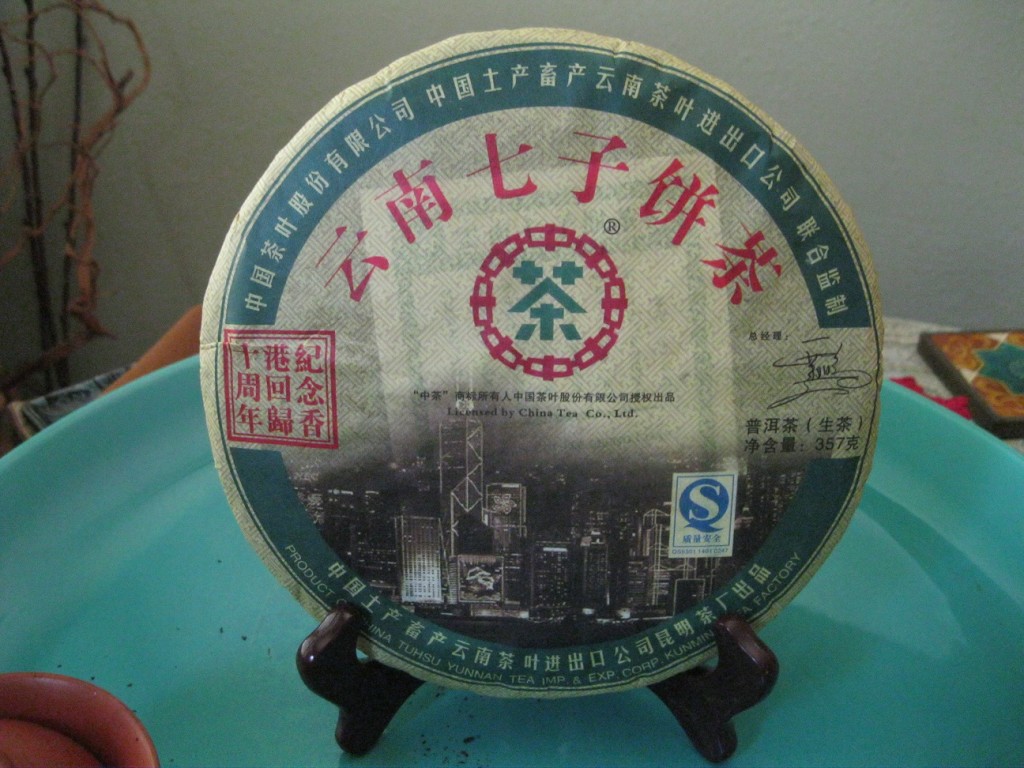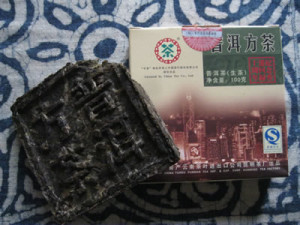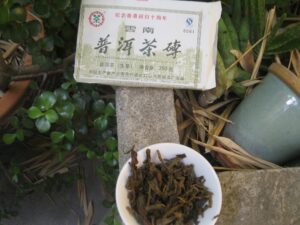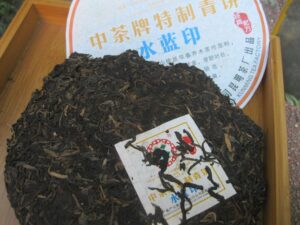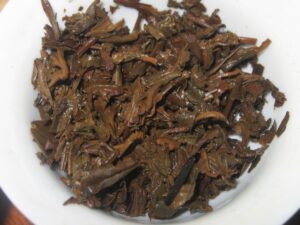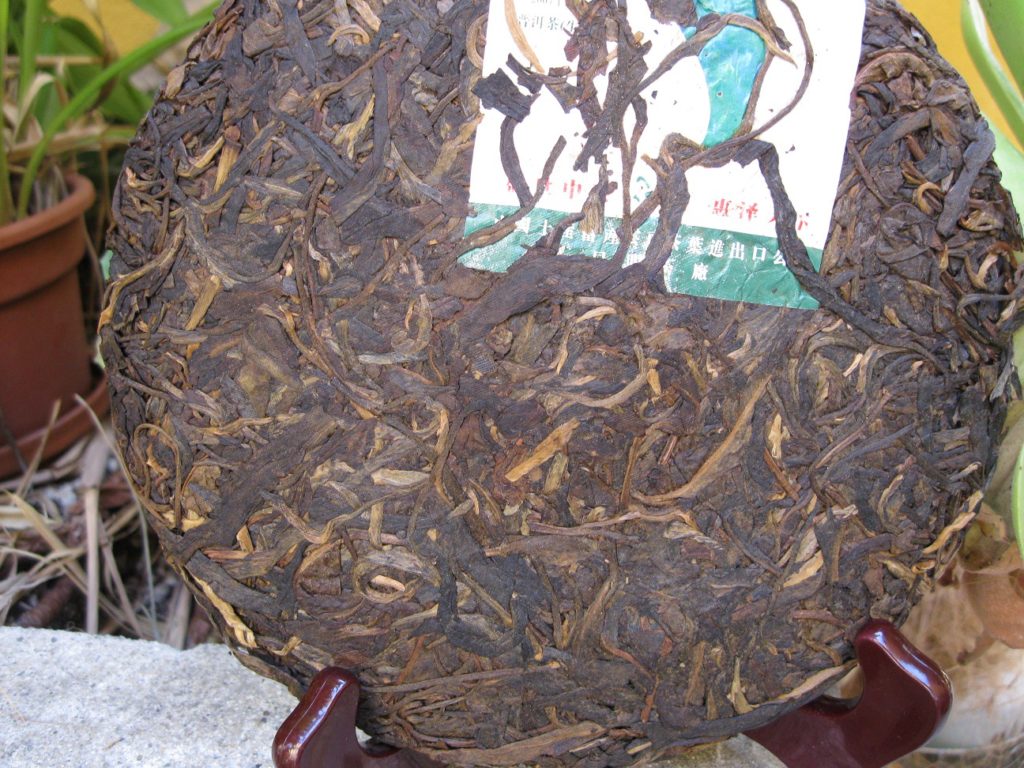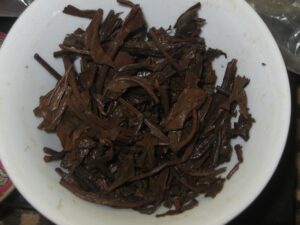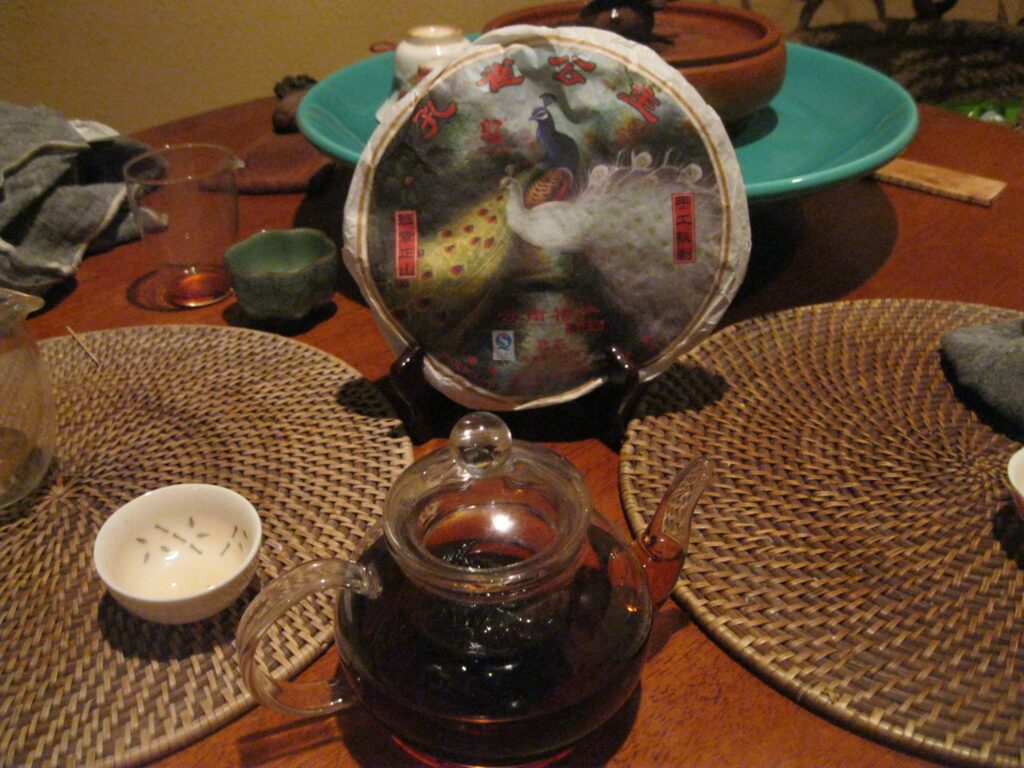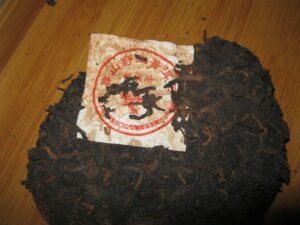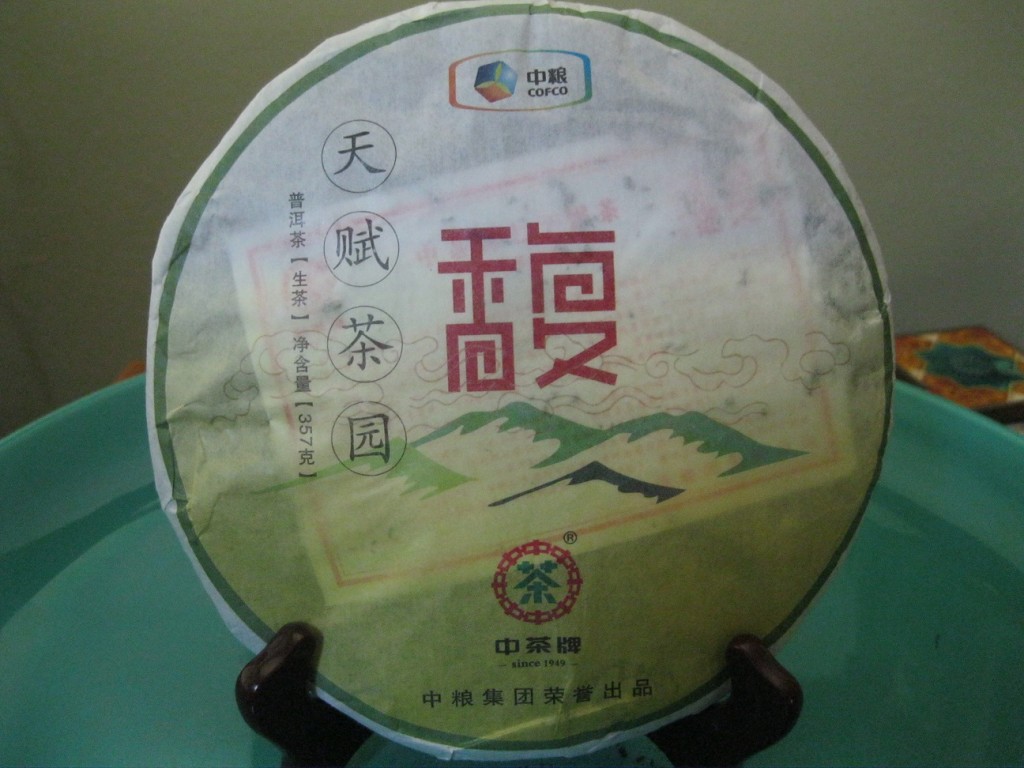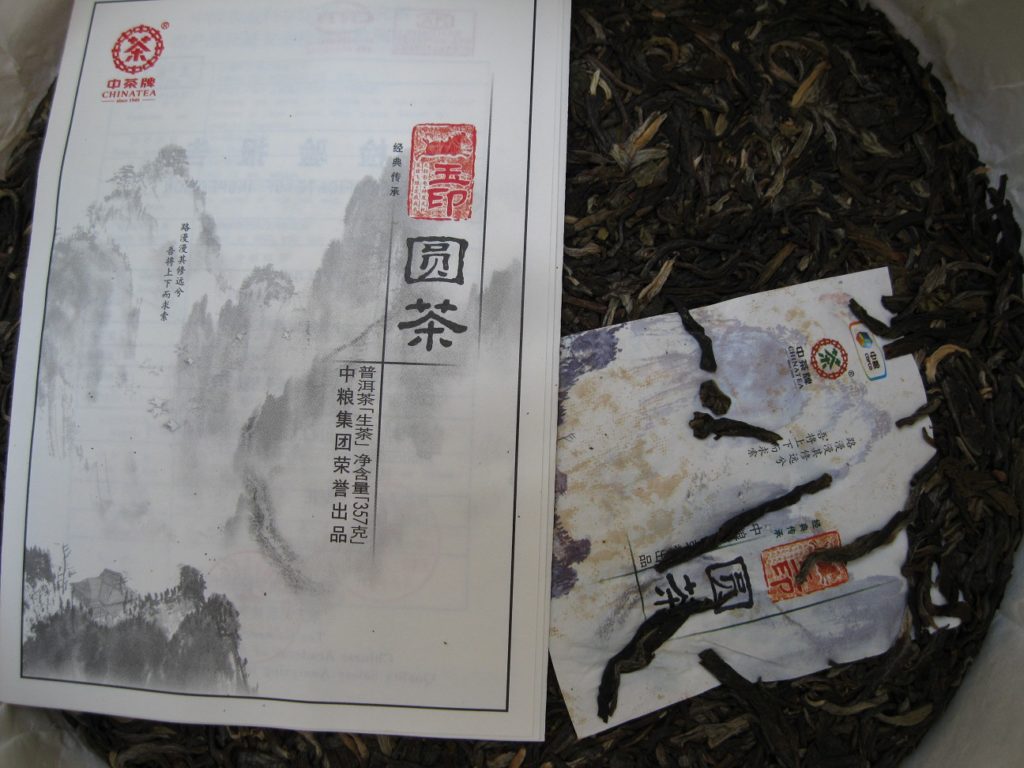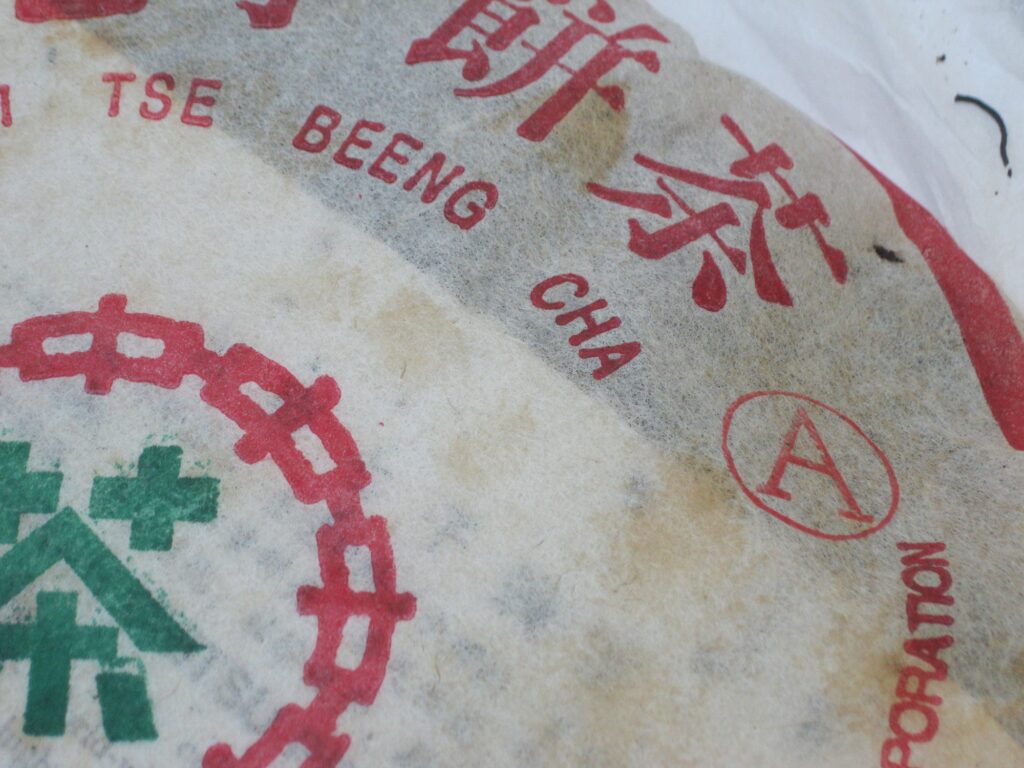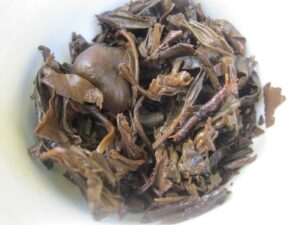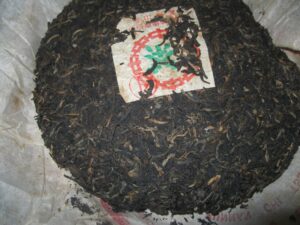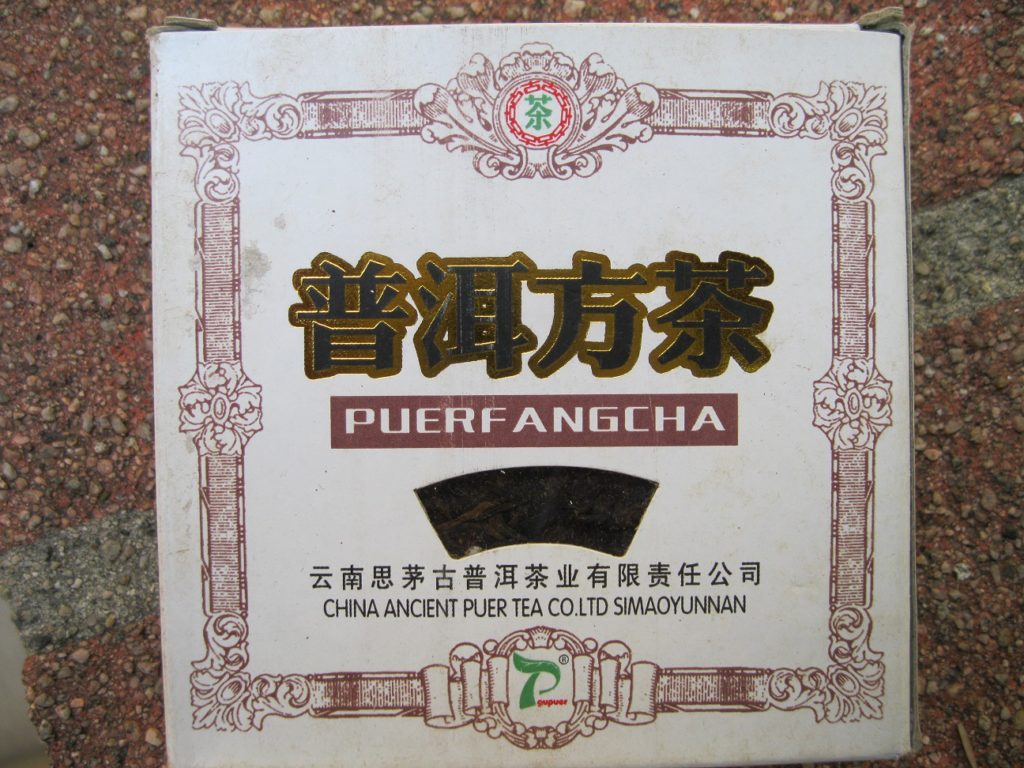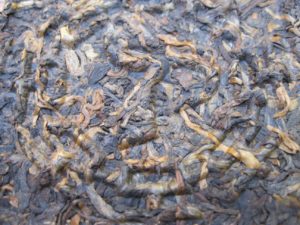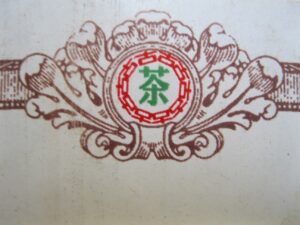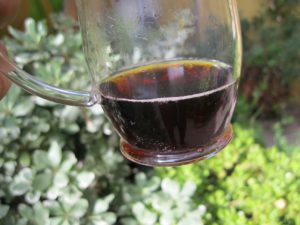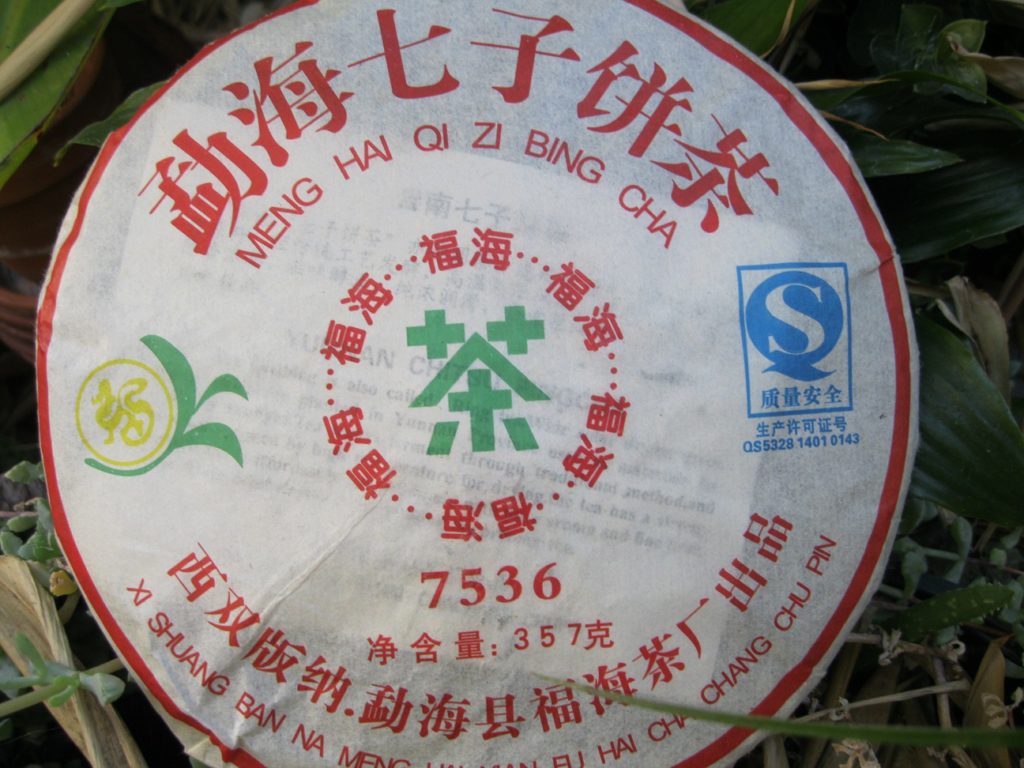Puerh Storage Update Jun 2021
Puerh Storage Update is part of an on-going saga involving our villain, the Puerh Junky, and his paltry puerh storage attempts. Since Feb ’21 he has been engaged in a recovery project: convalescing top-shelf puerh cakes sedulously stored in puerh perfect cardboard boxes, which ended up fiendishly robbing the cakes of flavour and possibly qi, while imparting a cardboard taste. As our camera zooms in we see the Puerh Junky rifling through his stack of convalescents.
“The 6442 isn’t going to be in here. It’s not convalescing. Still, now is a perfect time to balance the ’09 Bluemark, DQZ’s fruitiness, summer sublimeness.” He reaches through and grabs a generic bazhong wrapper, gives it a whiff, is satisfied, and examines what it is. “Ah-haa! The 8582 with the sexy aqua blue neifei.”
Later during confession. . .
“I bought this in ’18 under no pretenses that it was real. It was a ping to the vendor, as well as an opportunity to snatch up a bazhong wrapper with a unique neifei. It was not up to standard till being stored for one year. Whereupon it imparted a Zen cum root beer taste with a creepingly wicked qi. Quickly, I checked to see if any more of that offering was available but it was long gone.
In a puerhitious attempt to baby or otherwise elevate its status, the 8582 was removed from one storage unit, placed in a puerh cardboard box, and stored among the top-shelfers of the Stash. All the Stash top-shelfers can never become Collection offerings because they’re mostly simply not available. These can sometimes be sent out as little treats for general edification and to show off some of what I consider top-shelf.
So, from Jun ’19 to Feb ’21 the 8582 lay in that cursed cardboard in my least favourite storage container– the fridge. Day-after-day, month-after-month, that poor treasure received nothing short of the worst possible treatment. The worst! The fridge is essentially suspended animation. Transformation is slow. The perfect parameters have not been worked out. Where things are placed and whether it is in plastic matters. There are many variables that also depend on where the individual production is and what direction it needs to take.
In the case of the 8582, I was not looking for transformation, just storage. The fridge is close to ideal for suspension, though it does has some undesired storage effects. Still, it doesn’t even approach what cardboard does. Let me say this as emphatically as I possibly can. . . cardboard isn’t ideal.”
By this time the priest is considering calling in for reinforcements. The Puerh Junky goes on. . .
“Cardboard in the fridge is just a nightmare. The fridge already does something to make the tea “stuffy” in the first place, and the cardboard worsens matters by bleeding its essence into the tea, while sucking from it as well.
These boxes are Dracula to puerh.!” he expostulates, while the priest reaches for his ultra-tetra-inter-hyper caring science gizmo. Seemingly oblivious the Puerh Junky goes on. . .
“In ideal conditions perhaps it’s less of an issue. I nevertheless removed all my tuo from their fancy boxes, despite fantastic storage containerdom. Most have been stored box free anyway. The thin box of the Dali Tuo worries me little. The thin brown paper bags of the same material as cardboard worry me even less. So, my sleeves of tuo remain in sleeves, much as the rain in Spain, if you catch my drift.
Positively none of the ripes have ever warranted cardboard boxing, but I removed my treasured ripe Monkey from its gift box. Some Poison is stored in a big gift box and there are a few boxes in which productions arrive that I’ve been storing productions, but not in the fridge. Some of those have been covered in plastic, as I’ve noticed that can make a big difference.”
Later at the sanitarium in a lecture before no one. . .
“In any event, the subject here is rehab. Rehab in this case consists of bagging the the treasure in packages that are waxy or plastic lined with the outter covering being white cotton or brown paper bag material, a close relative of cardboard. I recently placed an order for a bunch of them, which I want to make available. I think I got the ones that are white cotton. That’s what the 8582 was placed in, in its original wrapper, unsealed, into the convalescent and archive tomb. ”
At the World Body of Puerh Nihilists, sanctioned and licensed by the world body of sanctioning, we find the Puerh Junky at the sanitarium standing before his gizmo wristwatch, synched with his thoughts through a super-convenient injectable nanobot luciferase care gel in a Zoom lecture. He’s about to conclude. . .
Findings
Aroma dry and in the heated vessel inviting. Deep notes of root beer. Evocations of Imperial Roots and the Tulin tuo that I’ve been tracking for a more affordable price and lost in the water in April.
Overall, its association with Imperial Roots is impossible to avoid. Hasty conclusions might lead one in the direction of Poison, but the latter is more camphorous whereas the former is peatier. It’s a bona fide root beer, with more ginseng and less cardamom.
Storage, that’s the focus, determining the results of a four-month rehab for the 8582. The matter here is not the 8582 itself, but how the findings contrast from before rehab entry. The findings are unequivocally positive, not ebullient but nonetheless unequivocal.
The 8582 is not as stultified as it was before entry. Beyond that it is now a pleasure to drink. All the attributes that made this treasure top-shelf are present. At the same time, it has changed but so have I. One of my own changes is in finding a more appropriate use for the tomato-shaped pot, which I’d previously believed to be best with tippy teas. Now I’m thinking the opposite. Obviously, the 8582 cannot have been changed by its cardboard ordeal.
I’ll keep it in rehab till October when it goes back to the fridge without cardboard (obviously) and in package, probably sealed.


